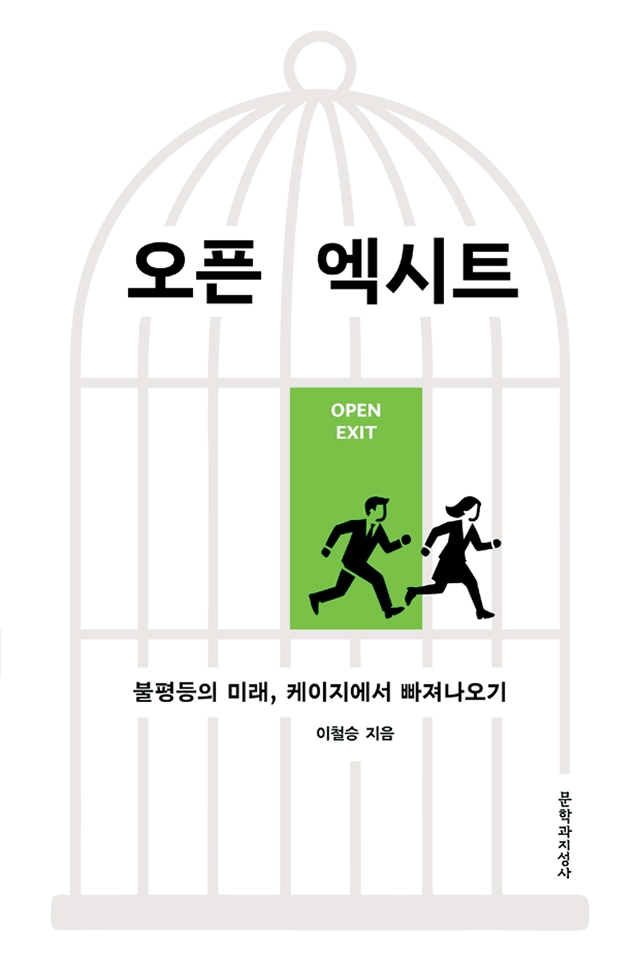
오픈 엑시트—불평등의 미래, 케이지에서 빠져나오기
- Page
- 376
- Publication Date
- May 16, 2025
- ISBN
- 9788932044002

Open Exit examines the narratives of dislocation/escape and settlement/restraint using the methodologies of social science.
Open Exit is a book about “getting out.” At the same time, it is about the mechanisms
that hamper such an escape, namely loyalty and compliance. The book calls these
mechanisms “social cage”—in other words, social cage is the psychological, systemic,
and environmental barricade that discourages or obstructs an individual from leaving a
certain social relation, group, or organization.
If we are to look back from the year 2055, what will we be able to pinpoint as the central
pillars of the inequitable structure of Korean society over the past thirty years? The
author nominates these three: artificial intelligence, birth decline/aging populations, and
immigration.
We cannot adjust to these three structural shifts with the rules and customs of the
existing cage. Struck by the restructuring that would ensue from such drastic shifts,
what plans can individuals and corporations come up with to mitigate the shock? What
strategic reactions should the state take? How will civil society protect the community
and society at large? Does Korean politics have the capacity to register and resolve this
problem? Will we be able to find new hope in this future of inequity?
Open Exit discusses what the social cage is, how it has been formed on the Korean
peninsula as well as East Asia at large, and which direction it will take to transform
itself. Previously, the author illuminated the structure of inequality between and within
generations by analyzing the generational network established by the popularly named
“386” generation of South Korea in The Generation of Inequality. Also, in Rice, Disaster,
and State, Lee traced the origin of Korea’s structural inequality through the lens of
the rice-farming system. Harboring the completion of Lee’s inequality trilogy, Open
Exit examines the social cages of East Asia, namely the structural shifts engendered by
artificial intelligence, the aging and shrinking population, and immigration, as well as the
new structural inequalities to emerge as a result of the collision amid such shifts, and
introduces the concept of exit option, which encompasses alternative action plans for
individuals and collectives.